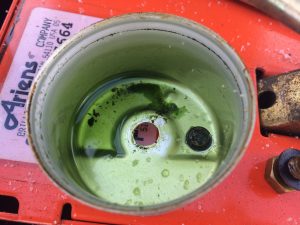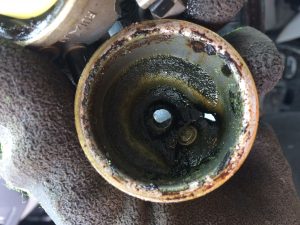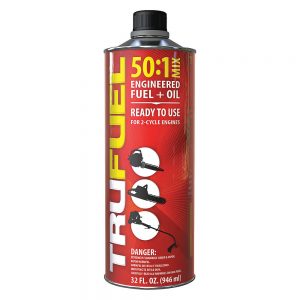How To Store Your Mower
HOW TO STORE YOUR MOWER FOR THE COLD SEASON
*An end-of-summer tune-up keeps power lawn equipment in top shape and will ensure a fresh start come cutting season.
Here is a DIY, step by step article on how to store your push mower for the winter. With the temperature dropping and Summer slowly transitioning into Autumn, now is the time to start thing of storing your machine properly, so it will start for you in the spring. Should you wish for MVS to perform this service for you, click the Book Your Service button below to submit a service request.
Gas-powered push lawn mowers take their fair share of abuse during the warm months, so some simple maintenance at the end of the season is critical in keeping your machine in good working condition. Replacing the oil, spark plugs, and air filters on mowers are all important when it comes to maintenance, but most of this can wait until spring. Here we will focus on the quality of your gas and how to make sure it doesn’t gum up your carburetor in the off season. This will help ensure that the machine will rev up with a pull of the cord next year.
Here is what you will need….
Nitrile gloves
Syphon
Clean container for your old fuel (if you’re syphoning)
1 can of 50:1 Tru Fuel (available at your local Canadian Tire in the garden centre. It must be 50:1)
EMPTY THE GAS TANK
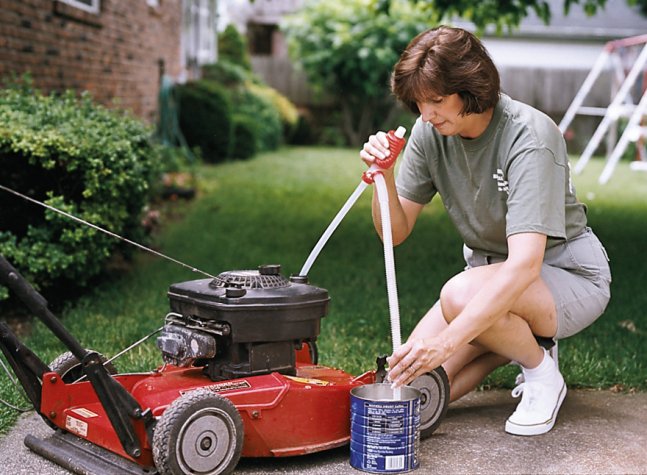
Unused gas left in a mower over the winter can get stale, gumming up the carburetor and inviting rust. Below are examples of what stale gasoline can do to your carburetor.
With the engine cool, siphon excess gas into a clean can. (You can put this gas in your car, provided it hasn’t been mixed with oil or any stabilizer.) You may also choose to just run the mower until it is out of gas, but depending on how much fuel is in the tank, this can be very time consuming, If it’s even half full, syphoning the gas makes the most sense.
With the gas tank empty or very close to it, add 1/8 to 1/4 can of Tru Fuel (it must be 50:1). Now you can start the mower. You want to make sure that the Tru Fuel has made it’s way to the carburetor, hence the reason for wanting to make sure the tank it empty, or near empty. Once you are sure it has, you can shut the mower off and put it away. That Tru Fuel will not gum up your carburetor in the off season.
Honestly, this is the easiest and safest way to store your mower. Adding stabilizer can sometimes be tricky. Too much can have an adverse effect and cause problems starting. If it’s not mixed proportionately, you can run into difficulties and blockages (see photo below). Never add stabilizer directly to your machines gas tank, as you would have no sure way of knowing how much fuel is in there. Although the Tru Fuel is a mixture of oil and gas, which is used in 2 stroke engines, it is perfectly balanced for 4 stroke as well. MVS has used this product or something very similar for years. It’s excellent and perfectly safe for your mower and snowblower.
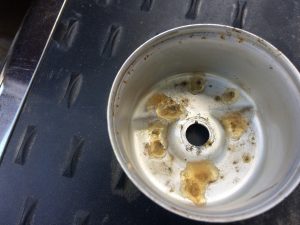
DISCONNECT THE SPARK PLUG
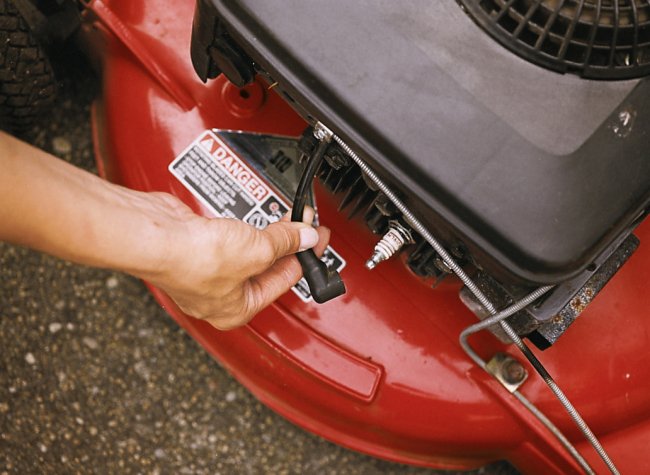
Before continuing with the remaining maintenance steps, it’s very important that you disconnect the spark plug to prevent the mower from kick-starting accidentally, which could lead to serious injury.
CLEAN THE UNDERCARRIAGE
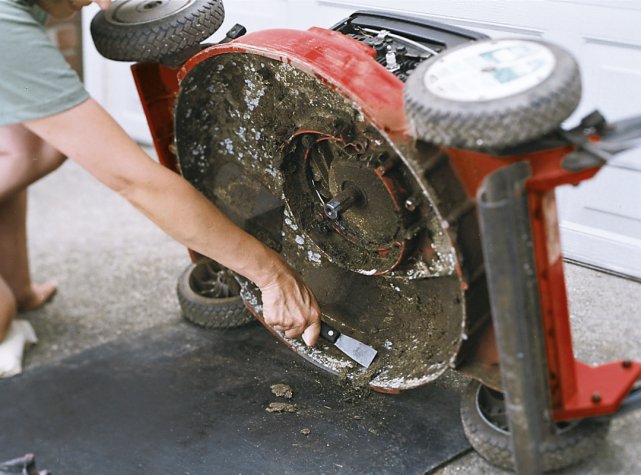
Use a putty knife and wire brush to scrape off the grass and mud caked on the mower deck. This prevents rust, clears the passageway to the discharge chute, and allows the aerodynamics of the deck to work as designed. With the deck cleaned, reattach the sharpened blade.
*Should you have no choice but to turn the mower on its side, remember to keep the carburetor side in the air and try to minimize the amount of time it is turned. Failure to follow these tips could allow oil to enter the cylinder chamber and result in starting/running issues.
You may be asking, “What about changing the oil and the spark plug?”
Yes, those are important too. But we will tackle those items when you pull the mower out of storage. 95% of our ‘no start’ calls in the spring are a direct result of a dirty, blocked carburetor. Not because of a fouled spark plug or old oil.



